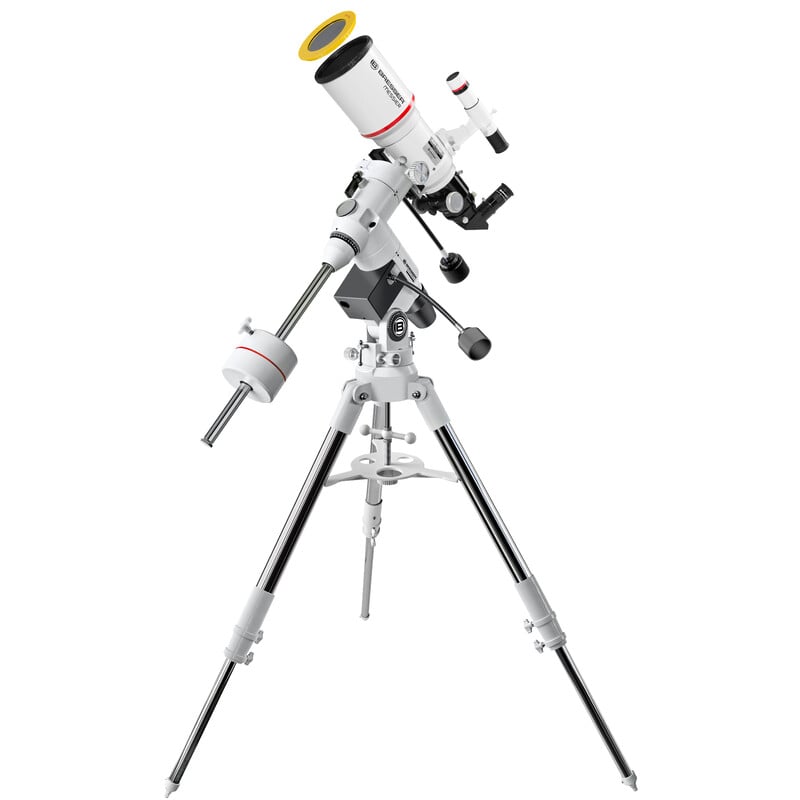Bird watching is a great way to get in touch with nature and observe different bird species in their natural habitat. Whether you are a novice birdwatcher or have been observing birds for years, good binoculars can make all the difference. But how do you choose the right binoculars for bird watching? In this blog post, we explain the main factors to consider when making your choice.
1. Magnification and objective lens diameter.
The numbers on binoculars, such as 8×42 or 10×50, indicate the magnification and diameter of the objective lens. For bird watching, 8x or 10x magnification is often recommended. What exactly do these numbers mean?
- Magnification (the first digit): This is how many times the image is magnified. At 8x magnification, you can see a bird eight times closer than with the naked eye. A 10x magnification offers more detail, but can also result in more vibrations in the image, making it more difficult to observe birds steadily.
- Objective lens diameter (the second digit): This indicates the diameter of the lens in millimeters. The larger the lens, the more light the binoculars capture, providing a brighter image, especially in low light conditions. For bird watching in different light conditions, an objective lens diameter of 42 mm is ideal because it provides a good balance between clarity and portability.
2. Weight and portability
Birdwatching can take hours, and you will probably do a lot of walking during your adventures. Therefore, it is important to choose binoculars that are light enough to carry comfortably, but sturdy enough to provide a stable image. Compact binoculars are useful for long hikes, but larger models often offer a brighter and sharper image. Try to strike a balance between portability and performance.
3. Image stability
As mentioned earlier, higher magnification can lead to more vibrations in the image. If you do a lot of spotting from the hand, an 8x magnification may be more stable than a 10x magnification. Some binoculars have built-in image stabilization, which can help reduce vibration, but these models tend to be more expensive. Another solution is a monopod or tripod to keep the binoculars stable while spotting.
4. Waterproof and weatherproof
Since bird watching is often done in the wild, it is important that your binoculars be able to withstand the elements. Look for a model that is waterproof and fog-proof, so you can continue spotting without any problems even if the weather suddenly turns. Many high-quality binoculars are filled with nitrogen or argon to prevent the lenses from fogging up with temperature changes.
5. Eye relief and eyeglass compatibility
If you wear glasses, it is important to pay attention to the eye relief of the binoculars. This is the distance between your eyes and the eyepieces at which you can still see the full field of view. Many binoculars have adjustable eyecups that you can adjust for eyeglass users so you can spot comfortably without having to take off your glasses. An eye relief of at least 15 mm is usually sufficient for eyeglass users.
6. Prisms and lens coating.
The quality of the prisms and lens coating in binoculars largely determines the clarity and sharpness of the image. The two most common types of prisms are porro prisms and roof prisms:
- Porroprisms: These usually offer better depth and spatial visibility, but are often larger and heavier.
- Roof prisms: These are more compact and lighter, making them popular with bird watchers who walk long distances.
In addition, special lens coatings improve light transmission, resulting in a brighter image with more contrast and less glare. Choose binoculars with fully multi-coated lenses for the best bird watching performance.
7. Budget
Finally, of course, it is important to choose binoculars that fit within your budget. Although there are excellent binoculars available in different price ranges, you usually get what you pay for. Higher quality binoculars last longer, offer better images and are more comfortable to use. If you are serious about bird watching, it may be worth investing a little more in a good pair of binoculars.
Conclusion
Choosing the right binoculars for bird watching involves several factors, including magnification, lens size, weight and durability. A model that fits your needs perfectly will make bird watching not only easier, but also much more enjoyable. Whether you spot birds in your backyard or on a long walk through nature, the right binoculars will help you observe every detail of these beautiful creatures.
Call-to-action
Are you looking for binoculars that are perfect for bird watching? Browse our extensive range of binoculars at Telescoop.co.uk, and find the model that suits your adventures!







